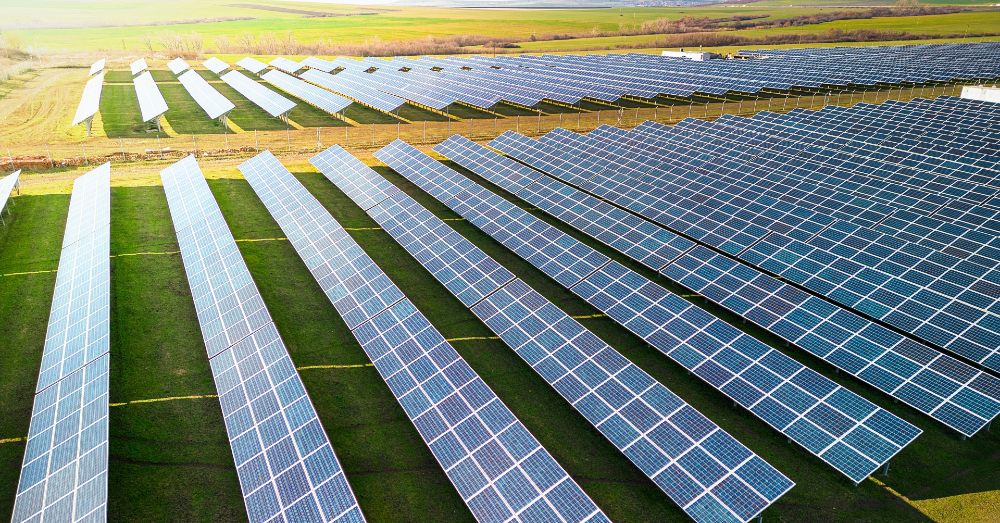Can solar farms and regular farming crops coexist? This question is being studied in Madison County in Ohio, and answers could be provided soon.
The most plentiful renewable energy that can be turned into electricity is sunlight. The solar energy can be capture by panels and turned into electricity, but this requires massive amounts of farmland to place a field of panels. Population growth has gotten to a point in which losing land for something like solar panels isn’t a good answer, but another answer might be. What if the land could be used for crops and solar panels at the same time?
Food or energy, which is more important?
As long as utility companies can produce electricity by burning coal, many people might not be accepting of large solar farms taking over nutrient-rich farmland. While that’s true, if the two could exist simultaneously, most people might find this to be an acceptable solution. The challenge is understanding what crops can grow around solar panels and how farmers can work around these devices. It’s also important to place the panels far enough apart for farming equipment to get between the panels to harvest the fields and bring in the crops.
The testbed for this farming idea
To learn if solar farms can be on the same land as crop farms, a test area has been created. This space takes up more than 1,900 acres on the Madison Fields in Ohio, which will be the largest test grounds for such research in North America. The goal is to allow crops to grow between the photovoltaic solar panels. This requires the right crops to grow, panels to be spread wide, and to have a positive outcome from both ventures simultaneously. There’s a lot that goes into this project to make it possible.
What crops make sense?
There has to be a balance for the crops that grow between solar panels. These crops can’t grow too tall to block the panels but also must be able to grow and thrive in partial shade because there will always be some portion of the field in the shade. This has led the Ohio State University researchers to choose forage crops such as alfalfa and hay to grow around the solar panels. This makes sense; both of these crops grow quickly, stay relatively short, and can tolerate some shade while growing. A third choice, which would be rotated into the mix, is soybeans, which is a traditional crop for field rotation.
How wide works for farmers?
Many farmers have moved to larger equipment to get the job done quicker. If solar farms and crop farms are to coexist, smaller farm equipment will need to be used. Thankfully, many farmers still have smaller equipment because some land areas aren’t appropriate for wider machinery. Still, equipment that is 15-17 feet wide can be maneuvered around the solar panels without too much trouble. Of course, in addition to the equipment size, solar companies must ensure the rows of panels leave enough room for equipment to turn around and avoid hitting any cables or necessary equipment while harvesting and planting the crops.
A third benefit of the land
The Madison Fields will explore another way to gain income from the land and keep things neater and cleaner around the solar equipment. This will involve sheep grazing the land and eating the crops around the panels to keep the area clean. This could be a great way to feed the sheep, ensure vegetation control, and use the sheep for meat and milk. This part of the test could add a third unique way for farmers to gain income from the same parcel of land.
Urban sprawl vs solar fields
Solar farming alongside crop farming could be a huge boon to the solar industry. Currently, urban sprawl could take over more farmland than solar farming, but there’s a huge difference between these two items. Urban growth will take time and happens gradually, but when a solar farm is built, it takes over the land immediately. This is why cooperative farming is such and important venture that could lead us into the energy future.
Will this break open the future of electricity?
The test project in Madison County, Ohio, is set to last four years. After that time, we’ll understand more about whether or not this type of cooperative farming between solar farms and crop farms can take place. If successful, we could see solar farms amidst the hay and alfalfa across the country, collecting solar energy for electricity and the crops for food.
This article might include affiliate links, which means we may receive a commission if you make a purchase using these links, without any additional cost to you. We have thoroughly researched and tested all products featured to provide a trustworthy review.

